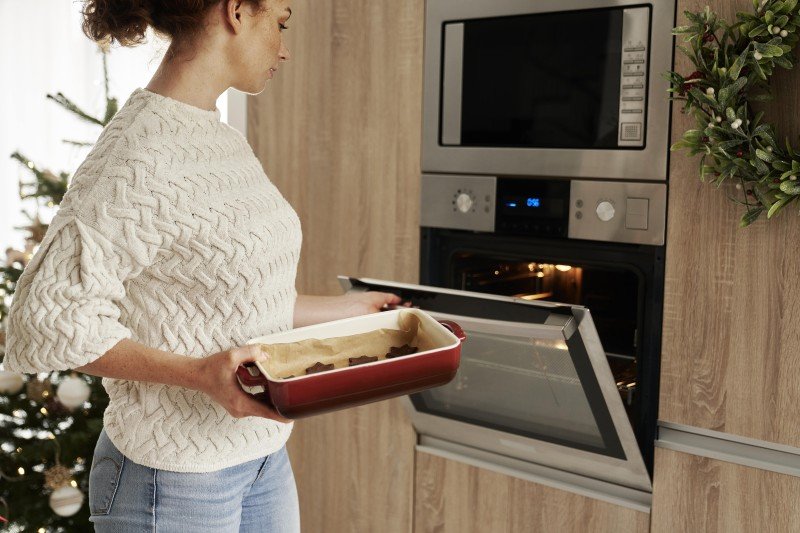20 Things You Should Be Educated About Oven And Hob
Understanding Ovens and Hobs: A Comprehensive Guide
When it pertains to cooking devices, ovens and hobs are among the most important tools found in modern kitchen areas. They play pivotal functions in meal preparation, changing raw components into scrumptious meals. Understanding the differences between various kinds of ovens and hobs and how to choose the right one can make a substantial distinction in cooking efficiency and food quality.
This short article explores ovens and hobs in detail, offering insights into their types, features, benefits, and common FAQs. Whether Buy Oven Online are a seasoned chef or a novice cook, this info will help you make notified decisions for your cooking needs.
Types of Ovens
Ovens are available in numerous types, each designed for particular cooking approaches and styles. Here is a comprehensive take a look at the most typical types of ovens:
Type of Oven
Description
Best For
Standard Oven
Makes use of heating elements located at the top and bottom for even cooking.
Baking, roasting, and general cooking
Stove
Features a fan that distributes hot air for fast and even cooking.
Baking pastries and cookies, roasting meats
Steam Oven
Utilizes steam to cook food, protecting wetness and nutrients.
Vegetables and fish
Microwave
Rapidly cooks food utilizing microwave radiation.
Reheating and fast meals
Wall Oven
Built straight into the wall for space-saving cooking services.
Small cooking areas and modern styles
Skill Level
Provides numerous cooking modes consisting of baking, broiling, and toasting.
Versatile cooking requires
Kinds of Hobs
Hobs, also called cooktops, been available in different types based on their fuel source and style. Understanding these options can assist in finding the best suitable for your kitchen setup:
Type of Hob
Description
Best For
Gas Hob
Makes use of gas flames for cooking, supplying immediate heat control.
Traditional cooking techniques
Electric Hob
Uses electric coils or induction elements to heat pots and pans.
Even heat circulation
Induction Hob
Uses electromagnetic energy to straight heat pots, supplying quick and effective cooking.
Energy-efficient cooking
Solid Plate Hob
A kind of electric hob with solid plates that requires time to warm up however retains heat well.
Sluggish cooking
Ceramic Hob
Functions a glass-ceramic surface area enabling easy cleaning, with electric heating components below.
Visual appeal
Aspects to Consider When Choosing an Oven and Hob
Choosing the best oven and hob combination requires mindful factor to consider of numerous aspects. Below is a list of essential aspects to bear in mind:
Cooking Style
- Are you an everyday cook or an occasional baker?
- Do you choose steaming or frying?
Kitchen Size
- What area is readily available in your kitchen for the appliances?
- Will you require integrated or freestanding models?
Fuel Source
- Do you have access to gas, or would you choose electric?
- Are you thinking about induction cooking technology?
Budget
- What is your budget for buying an oven and hob?
- Are you thinking about a high-end design or a more inexpensive choice?
Energy Efficiency
- Are you looking to decrease your energy usage?
- Do you choose home appliances that include high-efficiency ratings?
Benefits of Ovens and Hobs
Both ovens and hobs bring unique advantages to the kitchen. Here's a summary of some advantages:
Ovens:
- Versatility: Able to manage a wide range of cooking techniques from baking to roasting and broiling.
- Constant Results: Even heat circulation provides reputable cooking outcomes.
- Large Capacity: Ideal for big meals and batch cooking.
Hobs:
- Control: Gas hobs use instant heat changes, beneficial for accurate cooking.
- Performance: Induction hobs are understood for their quicker heat-up times and energy efficiency.
- Independent Cooking: Multiple hobs enable for cooking a number of meals all at once.
Choosing the best ovens and hobs is important for anyone aiming to boost their cooking abilities and kitchen efficiency. By comprehending the numerous kinds of each device, alongside their benefits and features, customers can make educated decisions that cater to their culinary habits and preferences.
As kitchens develop, so do the innovations surrounding cooking appliances. Purchasing the ideal mix of an oven and hob can lead to better cooking experiences, higher food quality, and even enjoyable time spent in the kitchen.
Regularly Asked Questions (FAQs)
What is the distinction between convection and traditional ovens?
- A convection oven uses a fan to distribute air for even cooking, while a traditional oven relies only on leading and bottom heating aspects.
How do induction hobs work?
- Induction hobs utilize electro-magnetic fields to straight heat pots and pans made from magnetic materials, resulting in faster cooking times and more energy efficiency.
Are gas hobs much safer than electric hobs?
- Safety depends on use and setup. Gas hobs need appropriate ventilation and can provide a fire risk, while electric hobs might present threats of burns due to their hot surface areas.
Can I bake in a steam oven?
- Yes, a steam oven can be used for baking, often resulting in moister and fluffier baked items, particularly breads and pastries.
What should I try to find in an integrated oven?
- Search for features like capacity, cooking modes, energy performance rankings, and ease of cleansing.
By thinking about the information and guides provided in this article, readers can quickly browse the world of ovens and hobs, ensuring that they choose the best appliances to match their cooking requirements.
